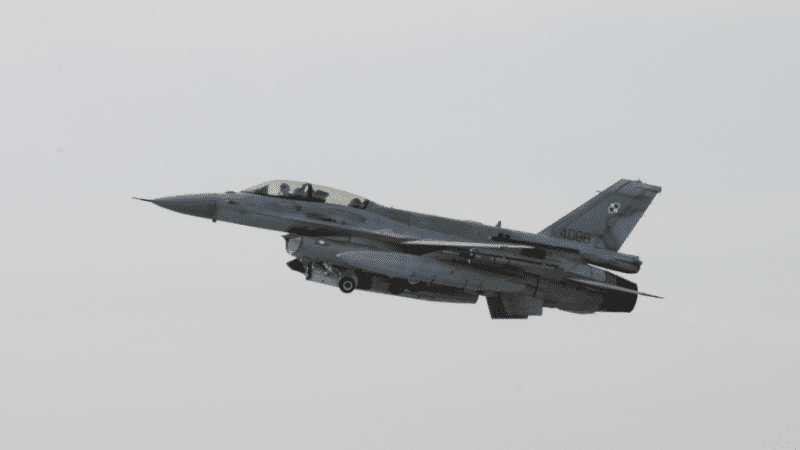Armed Forces
Green Light for the Massive Polish F-16 Upgrade

The Defense Security Cooperation Agency approved a potential sale of a large upgrade package for Polish F-16 fighter aircraft. The upgrades in question may be worth up to USD 7.3 billion, though the actual value will be lower depending on the negotiation outcome.
Poland has been using 48 F-16C/D Block 52+ aircraft, and the upgrade was expected for some time now. The scope of upgrade will be mostly focused on situational awareness, survivability as well as weapons system integration (including SDB-I and SDB-II) and sustainment. Once the negotiations, which would take place several months, are finished, Poland would likely upgrade its F-16 to the most modern Viper configuration and establish certain industrial capacity to maintain the aircraft and their equipment.
According to DSCA, „the Government of Poland has requested to buy fifty-eight (58) Improved Programmable Display Generators (48 installed, 10 spares); three (3) AGM-158 Joint Air-to-Surface Standoff Missile (JASSM) Flight Test Vehicles, Captive Carry; three (3) Small Diameter Bomb II (SDB II), GBU53/B Guided Test Vehicles (GTV); eight (8) SDB II, GBU-53/B Captive Carry Reliability Trainers; two (2) SDB I, GBU-39(T-1)/B Guided Test Vehicles (GTV); fifty-eight (58) Embedded Global Positioning System (GPS) Inertial Navigation Systems (INS) (EGI) with Selective Availability Anti-Spoofing Module (SAASM) or M-Code capability and Precise Positioning Service (PPS) (48 installed, 10 spares); fifty-eight (58) AN/APG-83 Active Electronically Scanned Array (AESA) Scalable Agile Beam Radars (SABR) (48 installed, 10 spares); sixty (60) Modular Mission Computer (MMC) 7000AH upgrades, or equivalent (48 installed, 12 spares); sixty (60) Next Generation Mission Computer (XMC), or next generation equivalent (48 installed, 12 spares); seventy-three (73) AN/ALQ-257 Integrated Viper Electronic Warfare Suites (IVEWS), or seventy-three (73) AN/ALQ-254V(1) Viper Shield advanced electronic warfare (EW) suites, or equivalent (63 installed, 10 spares); two (2) AIM-9X Block II Sidewinder Special Air Training Missiles; and two (2) AIM-9X Block II Sidewinder Captive Air Training Missiles (CATM)”.
Also, the following „non-MDE items will also be included: major modifications and maintenance equipment; Phased Array Warning System (PAWS-2) missile warning systems; Joint Helmet Mounted Cueing Systems (JHMCS II); AN/ARC-238 radios (or equivalent); AN/APX-126/127 Advanced Identification Friend or Foe (AIFF) with combined interrogator/transponder (CIT) and Mode 5 (or equivalent); AN/ALE-47 Countermeasure Dispenser Systems (CMDS), classified countermeasure processors, sequencer switching units, and control display units; AN/ALQ-254V(1) Viper Shield advanced EW suites, including lab assets (or equivalent); KY-58, KIV-78, or equivalent, KGV-135A, AN/PYQ-10 Simple Key Loaders (SKLs), MS-110 reconnaissance pods, communications security (COMSEC) cables, and cryptographic devices; tactical synthetic aperture radars; Joint Mission Planning Systems (JMPS) with unique planning components and software; AGM-158 JASSM classified test equipment; aircraft components, parts, and accessories; spare parts, accessories and consumables, and repair and return support; classified and unclassified software delivery and support; classified and unclassified publications and technical documentation; studies and surveys; U.S. Government and contractor engineering, technical, and logistics support services; and other related elements of logistics and program support”.
DSCA notes that Poland usually requests offsets and „any offset agreement will be defined in negotiations between the purchaser and the contractor”, with the prime contractor being Lockheed Martin, the aircraft manufacturer.
It is likely that the final G2G agreement will have a smaller value than the posted USD 7.3 billion, as according to DSCA „description and dollar value are for the highest estimated quantity and dollar value based on initial requirements. Actual dollar value will be lower depending on final requirements, budget authority, and signed sales agreement(s), if and when concluded”. DSCA also added that „this proposed sale will support the foreign policy goals and national security of the United States by improving the security of a NATO Ally that is a force for political and economic stability in Europe”.
